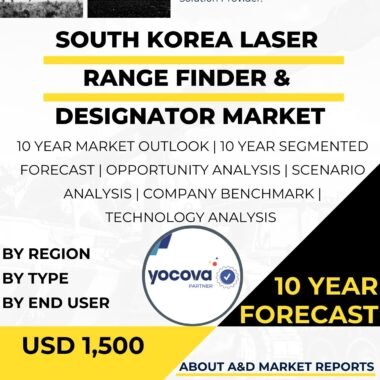Description
The demand for magnesium in the aerospace and defense industry in Japan is driven by its desirable material characteristics which align with the sector?s priority for lightweight, strong, and performance-enhancing materials. Magnesium alloys are particularly sought after due to their low density and high strength-to-weight ratio, which enable significant weight reductions in aircraft and defense systems without compromising structural integrity. This weight savings translates directly into improved fuel efficiency for commercial and military aircraft, reduced emissions, and enhanced operational range and payload capacity. Consequently, magnesium has become an increasingly vital material in manufacturing aircraft fuselages, engine components, transmission casings, and various structural parts, reinforcing Japan’s focus on developing advanced aerospace-grade magnesium materials catered to these rigorous requirements.
Japanese aerospace manufacturers and defense contractors have been intensifying their adoption of magnesium alloys as part of a broader strategy to innovate and improve energy conservation in aviation technology. This move is supported by Japan?s industrial emphasis on cutting-edge precision engineering, environmental responsibility, and sustainable manufacturing processes. In particular, the demand is bolstered by trends such as the implementation of additive manufacturing and hybrid processing methods that allow complex magnesium alloy components to be efficiently produced with minimal waste and improved performance traits. These technological strides enable the fabrication of parts with enhanced fatigue resistance and high-temperature stability, which are essential for coping with the demanding conditions of aerospace and defense applications.
Research collaborations between metallurgists, materials scientists, and aerospace engineers have advanced the development of specialized magnesium alloys that offer not only lighter weight but also improved corrosion resistance and mechanical resilience. Such advancements are crucial because magnesium is naturally prone to corrosion and flammability, factors which traditionally limited its usage. Progress in surface treatments, coatings, and alloy formulations now addresses these vulnerabilities, making magnesium increasingly viable and safe for broader aerospace and defense use. However, despite these improvements, challenges persist in maintaining consistent supply chains of high-purity magnesium and alloying elements, as Japan continues to rely on imports for some raw materials. This dependency can introduce cost fluctuations and supply constraints, impacting overall market dynamics.
Regulatory aspects also influence the market landscape, as aerospace and defense applications demand rigorous certification and testing of new materials. The approval process for novel magnesium alloys is often stringent and time-consuming, requiring comprehensive performance validation and safety assurances. This regulatory environment can delay the market entry of innovative magnesium materials but simultaneously ensures that only materials meeting the highest standards are adopted, thereby preserving the reliability and safety of aerospace and defense operations.
The ongoing global focus on reducing carbon footprints and complying with stricter environmental regulations further propels the demand for magnesium alloys in Japan?s aerospace and defense sectors. Lightweight magnesium components help reduce the overall environmental impact of aircraft across their lifecycle by lowering fuel consumption and associated emissions. This environmental imperative aligns with Japan?s national goals for sustainable industrial development and energy efficiency, positioning magnesium as a strategic material in future aerospace designs.
Additionally, the defense segment increasingly favors magnesium alloys for applications requiring both strength and lightweight construction, such as in military aircraft, unmanned aerial vehicles, and other defense platforms. These alloys contribute to improved mobility, payload capacity, and endurance of defense systems, addressing the tactical and operational needs of modern military forces. The integration of magnesium-based materials also supports emerging defense technologies that emphasize agility, rapid deployment, and fuel efficiency, reinforcing demand within this sector.
Investments are also being directed towards advancing manufacturing processes to capitalize on magnesium?s benefits while mitigating its challenges. The industry explores automated production lines, digital design integration, and precision material testing to improve both yield and quality. These improvements aid in reducing lead times and production costs, making magnesium alloys more competitive with other materials traditionally used in aerospace and defense like aluminum and titanium.
Japanese companies leading in this field are continuously innovating, focusing on alloy compositions that offer enhanced durability, thermal stability, and corrosion protection. These efforts are supported by government and private sector collaborations aiming to establish a robust magnesium supply and production ecosystem tailored to aerospace and defense needs. The evolving market is marked by the pursuit of next-generation alloys that support the development of lighter, more efficient, and environmentally sound aerospace and defense systems.
In summary, the demand for magnesium in Japan?s aerospace and defense industry reflects a combination of material advantages, technological progress, environmental considerations, and strategic industrial goals. Despite challenges related to material properties and supply constraints, ongoing research and development, coupled with advancements in manufacturing, are driving the expanding use of magnesium alloys in this sector. This trend underscores Japan?s commitment to leveraging magnesium as a key enabler for high-performance, fuel-efficient, and sustainable aerospace and defense solutions. These dynamics position magnesium as a critical component in Japan?s industrial future within the aerospace and defense marketplace.




